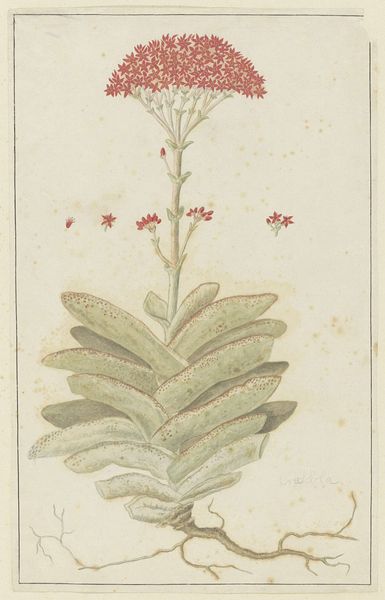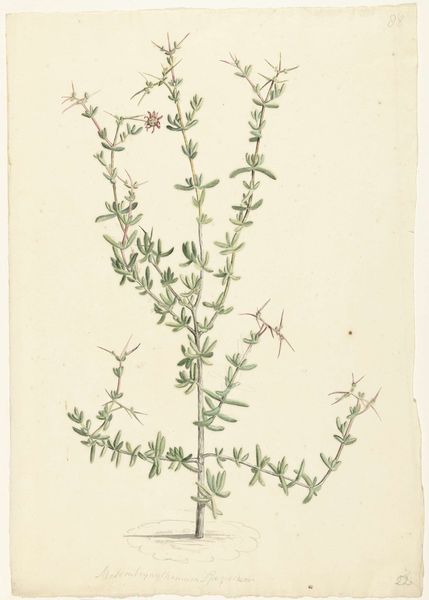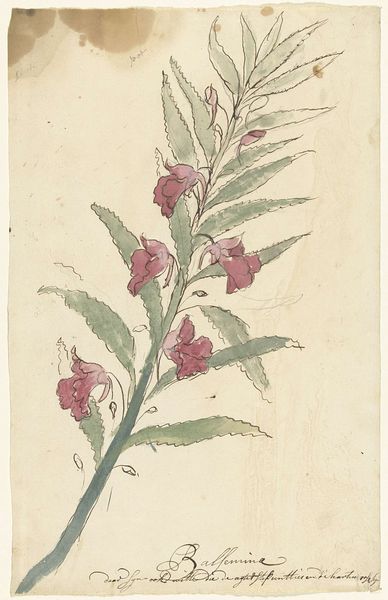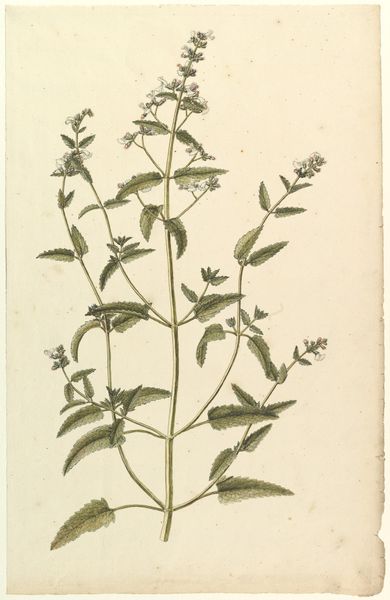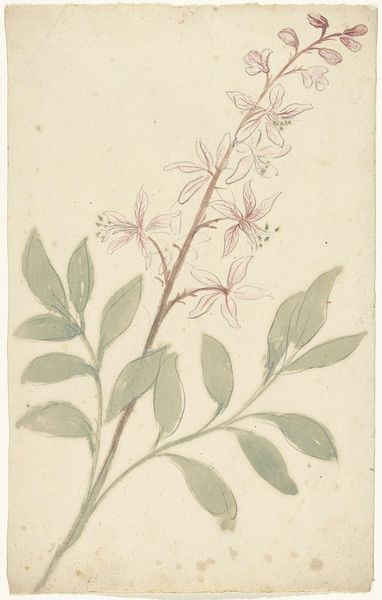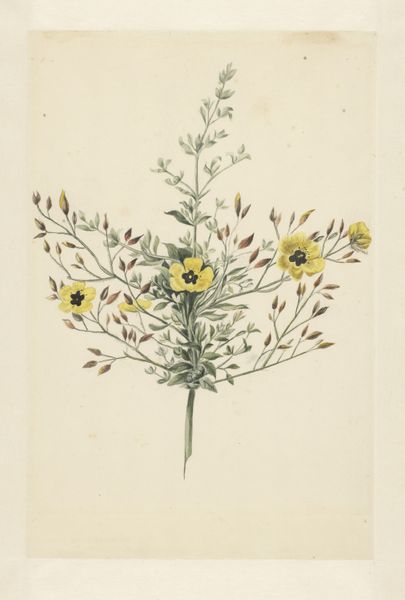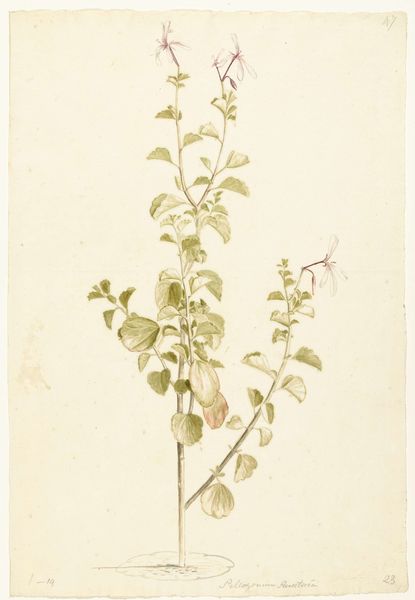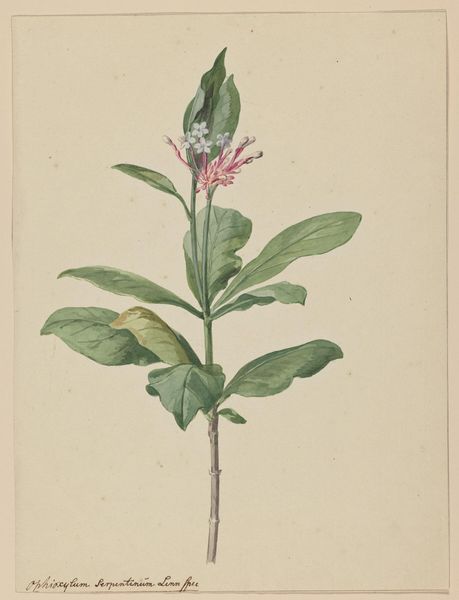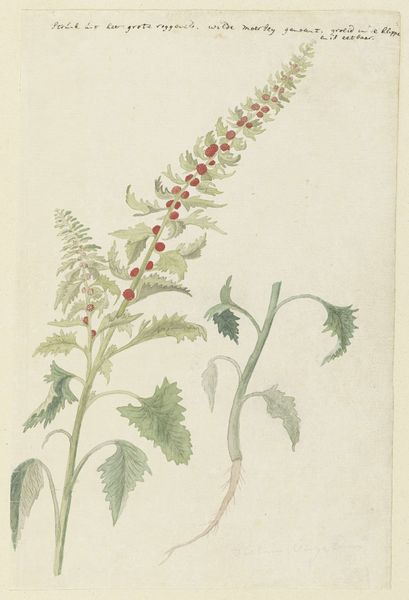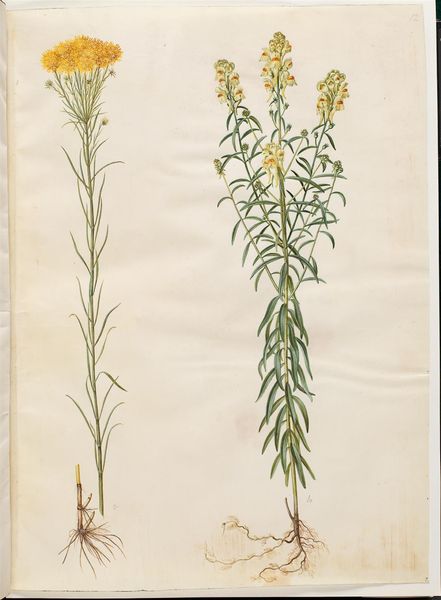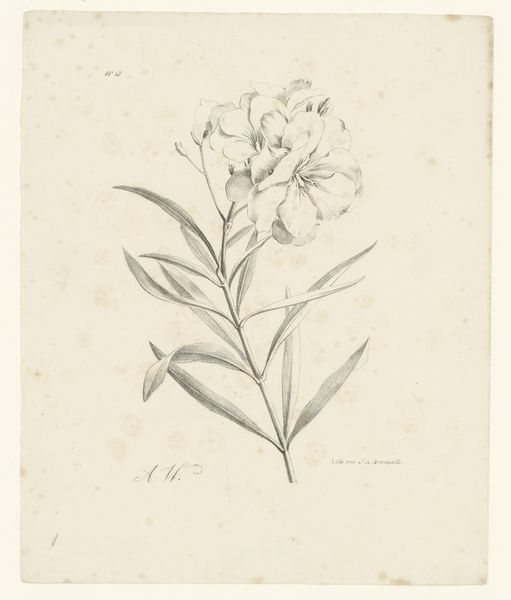
Bloeiende frederiksbloem (Asclepias curassavica) 1668 - 1729
0:00
0:00
laurensvincentszvandervinne
Rijksmuseum
drawing, watercolor
#
drawing
#
dutch-golden-age
#
watercolor
#
botanical drawing
#
botanical art
Dimensions: height 518 mm, width 370 mm
Copyright: Rijks Museum: Open Domain
Editor: So, this lovely botanical drawing is called "Bloeiende frederiksbloem (Asclepias curassavica)," created sometime between 1668 and 1729 by Laurens Vincentsz. van der Vinne. It's a watercolor drawing currently housed in the Rijksmuseum. It's delicate but also incredibly precise. What structural elements jump out at you in this piece? Curator: Primarily, the rigorous adherence to mimetic representation arrests my attention. The composition reveals an almost scientific rendering through calculated compositional structuring and delicate gradations of color; observe how Van der Vinne utilizes precise linear configurations to delineate the boundaries of each leaf and petal, affording it a distinct formal identity within the totality of the pictorial space. Do you observe how these elements operate independently, but harmonize via careful arrangement of space? Editor: Yes, the way the plant fills the frame is striking. The precision in each element stands out. The rendering feels so careful! So much deliberate application of lines and pigments. Are there any aspects you find less successful? Curator: I find the absence of dynamism, typical of Dutch Golden Age botanical illustrations, noteworthy, if not entirely detrimental. One could argue that a more robust engagement with asymmetry might have enriched its aesthetic qualities, thereby intensifying the phenomenological impact on the observer. The symmetrical presentation seems too…stilted. It limits potential avenues for engaging with complex visual dialogues. Editor: That's a perspective I hadn't considered. It makes me rethink my initial reaction of it simply being precise. I see what you mean. Curator: Formal considerations, as we have seen, yield insightful possibilities. The analysis of these, albeit small, artistic and visual decisions gives voice to what otherwise lies unspoken within the confines of aesthetic appreciation. Editor: This has been insightful; it highlights the significance of close, sustained visual inspection to discern complex artistic strategies. Curator: Agreed, art historical study is about structured inquiry, not immediate judgements.
Comments
No comments
Be the first to comment and join the conversation on the ultimate creative platform.
